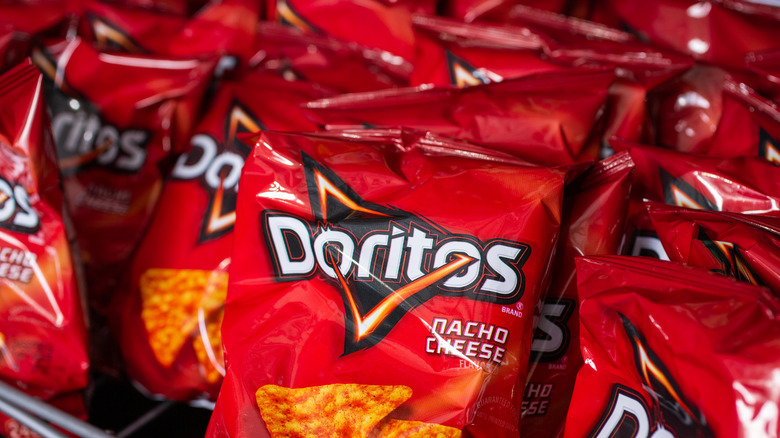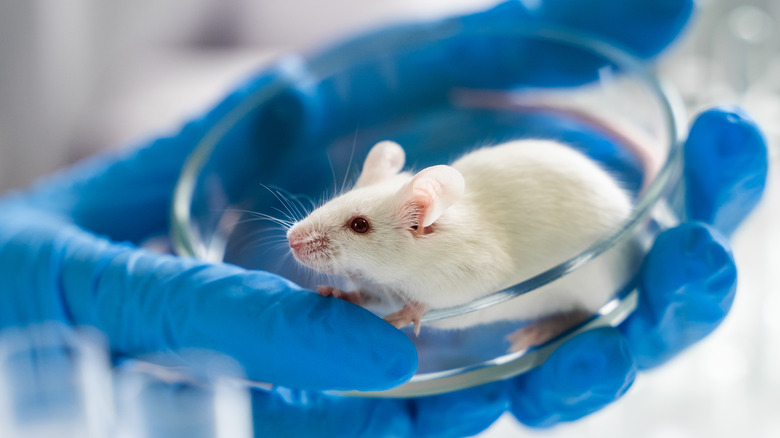The Red Dye In Doritos, Skittles May Cause Serious Inflammation
Did you know that many brands often use the same artificial flavor or dye in their drinks and snacks? For instance, banana Laffy Taffy and banana Runts, while distributed by different companies, get their flavor from the same derivative of isoamyl acetate, per Food & Wine. As the name "artificial" suggests, it might not surprise you to learn that the ingredients that mimic the compounds of natural fruits and vegetables aren't always the healthiest.
Those who were drinking soda in the early millennium might remember the short-lived Pepsi Blue. Its main coloring agent, Blue 1, which is responsible for the hue of blue raspberry sweets, has been banned in certain countries, per Insider. Although Blue 1 has not been officially banned in the United States, organizations like the Center for Science in the Public Interest have found that the dye may cause a variety of health issues following an unpublished study that found a proliferation of kidney tumors in male rats who consumed the ingredient as well as a preliminary study that found the dye might have a negative effect on the development of nerve cells.
Now, upon the release of a recent study, the spotlight is on Red 40, also known as Allura Red AC (AR). The red dye, used in popular snacks like Skittles and Doritos Nacho Cheese, has been found to cause serious inflammation in mice.
The dye was found to exacerbate colitis in mice
A 2022 study published in Nature Communications found that exposure to Red 40 has a negative effect on gut health. For 12 weeks, researchers exposed mice to the dye in doses similar to that of a typical Western diet and found that it had a negative effect on the delicate balance of bacteria in the gut, which can lead to inflammation. Furthermore, they found that exposure to the dye early in life increased the risk of developing colitis. In humans, this might mean that young children who consume products made with the Red 40 could be at higher risk of developing inflammatory stomach issues related to the colon.
As lead study author Waliul Khan stated in a press release, "What we have found is striking and alarming, as this common synthetic food dye is a possible dietary trigger for IBDs. This research is a significant advance in alerting the public on the potential harms of food dyes that we consume daily."

